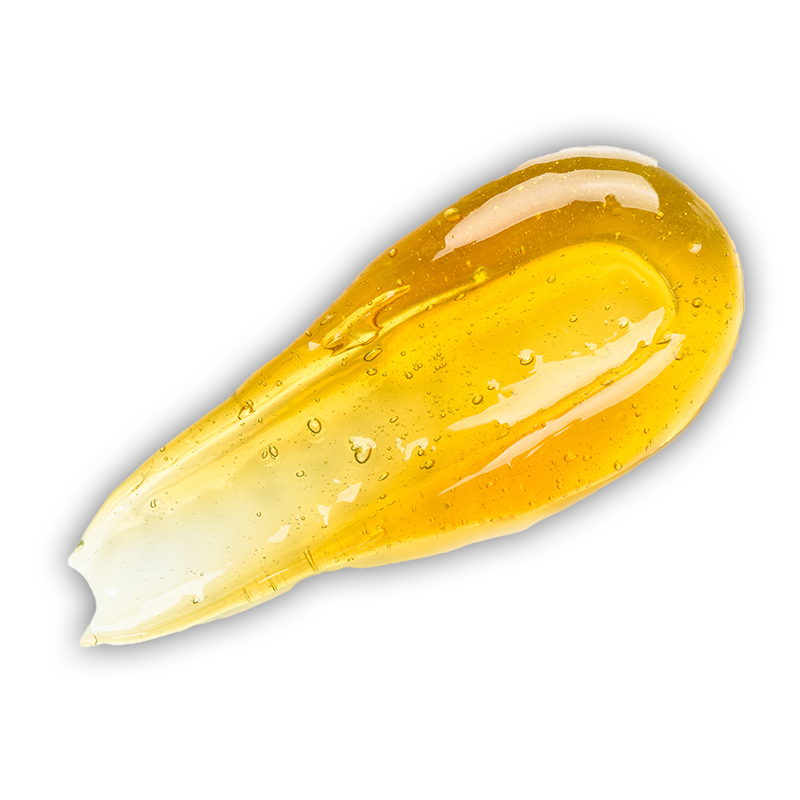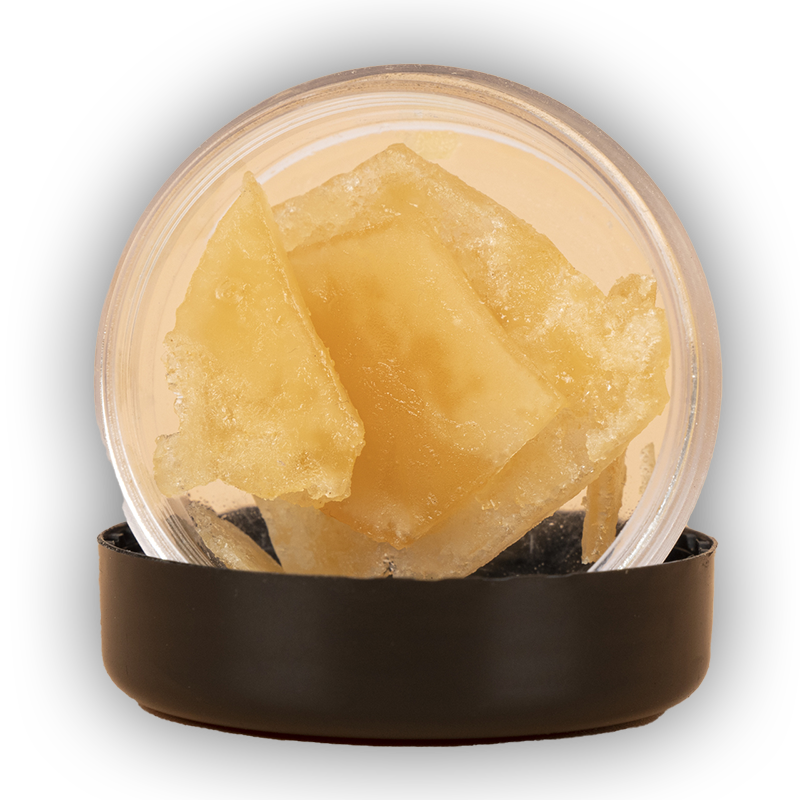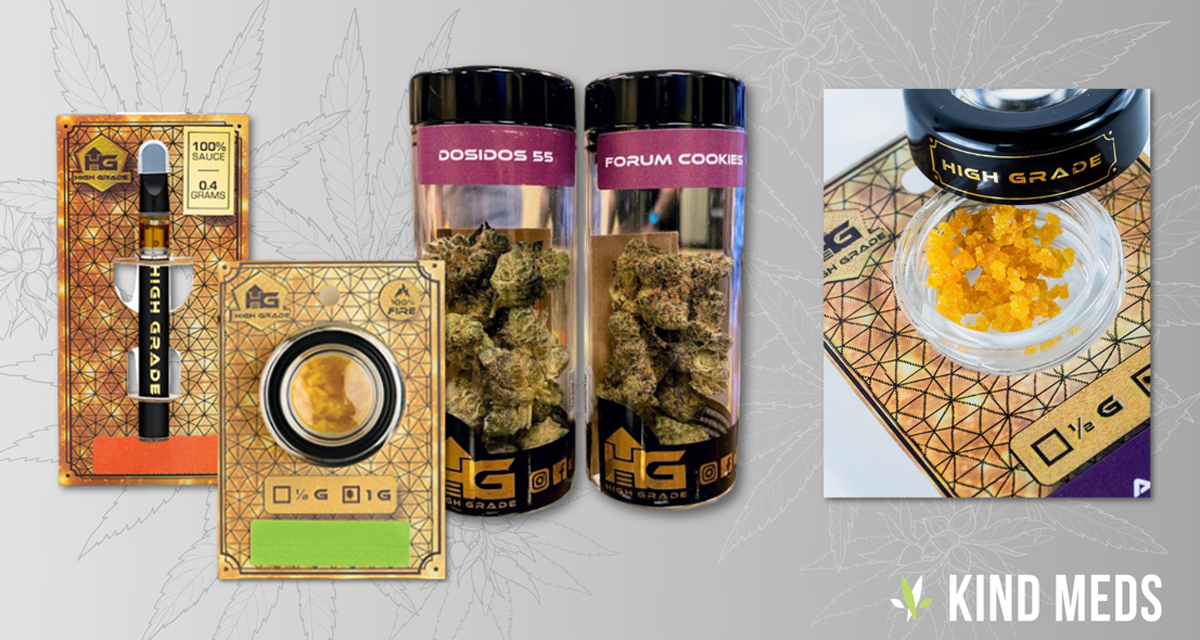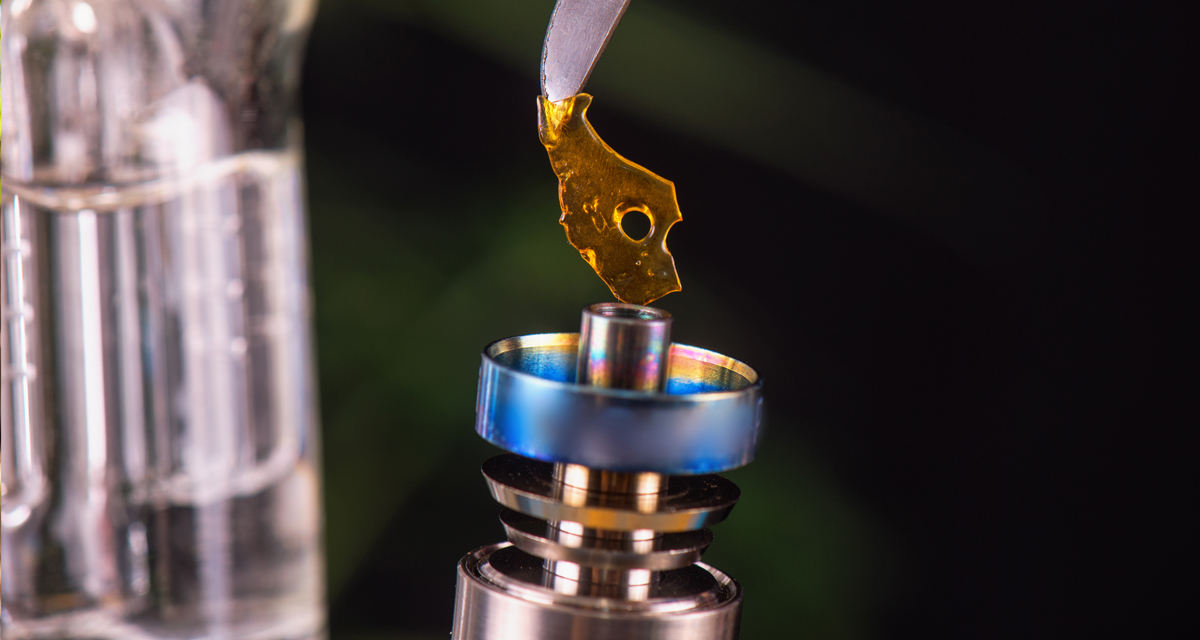Cannabis Concentrates
At Kind Meds, we work diligently to educate both new and experienced cannabis users about the many types of products available in the cannabis community. While there’s certainly a lot to learn about cannabis flower, edibles, vapes, and more, one of the most diverse subtypes of cannabis products is what’s known as cannabis concentrates.
Cannabis concentrates come in a wide range of forms, all of which have unique textures, features, and even effects. That’s why, regardless of how experienced you are with cannabis, there’s always something to learn about cannabis concentrates.
This guide will help you make an informed decision about your cannabis concentrate purchase.
![]()
What Are Cannabis Concentrates?
Concentrates are a refined category of cannabis extracts that are developed to – you guessed it – obtain concentrated quantities of cannabis compounds and separate them from the plant matter. Concentrates typically begin life as raw extract oils and waxes from the cannabis plant, all of which go on to produce different consistencies, appearances, cannabinoid levels, and effects depending on the concentration process. In other words, concentrates take the most desirable components of the cannabis plant and condense them into a potent substance for consumption.
Concentrates were developed to feature these important parts of the cannabis plant – the chemical compounds known as cannabinoids and terpenes. Cannabinoids are compounds like THC, CBD, and over a hundred more that bind to the cannabinoid receptors in the body to create psychoactive and therapeutic effects. Terpenes are natural scent compounds found in cannabis plants that give plants their unique aroma and flavor. Many concentrates feature robust cannabinoid and terpene profiles, while others hone in to isolate a few.
Are Concentrates and Extracts the Same?
Some people use the terms extract and concentrate interchangeably, but there is actually a distinction between the two. In a sense, while all concentrates are extracts, not all extracts are concentrates.
A cannabis extract is created when someone uses any number of processes to extract cannabis compounds, usually in the form of an oil, from the plant matter. This raw extract can then be further processed to concentrate the desired cannabinoids and eliminate remaining plant matter and other ingredients, leaving behind a more concentrated product.
How Does the Cannabis Concentrate Process Work?
To produce concentrates, cannabis companies must remove the cannabinoids from the plant matter and refine the raw cannabis extracts.
In many cases, this involves using a solvent to strip the resinous trichomes (hair-like extensions of the plant) and their associated cannabis compounds from the rest of the plant, then purging away the solvent and plant matter. Since the solvents are purged away, these concentrates are known as solvent-free extracts.
Solvents used to create cannabis concentrates can include:
- Carbon dioxide
- Ethanol
- Hydrocarbon (a mixture of propane and butane)

A more traditional way of creating cannabis concentrates involves using water, heat, pressure, or a combination of these methods to force the trichomes away from the rest of the plant matter, then applying pressure again to extract a resinous material rich in cannabinoids and terpenes.
Popular methods include:
- Water-based processing
- Dry or dry ice processing
- Pressure-heat combination processing
After the cannabis extract has been removed from the plant matter, it can be further refined or manipulated to create a staggering array of concentrates.

The Different Types of Cannabis Concentrates
While there are many different types of concentrates available, the ones we’ve listed below are some of the most common on the market. With the various extraction methods, textures and consistencies, and even plant parts used to make cannabis concentrates, the classification of all our favorite products can get a bit confusing. To help, we’ve grouped them according to how they got their unique descriptive terminology.
Concentrates Named According to Extraction Method
Many popular and versatile concentrates are named according to the methods used to remove them from the cannabis plant matter. Most of these can be further refined to create multiple products of different consistencies.

Solventless Hash (Extraction Method)
Also known as hashish, hash is formed when pressure is applied to kief to make a concentrated piece, which can be broken apart for consumption. Hash can also be found in the residue left on a person’s fingertips after they handle cannabis flower, which is sometimes called “finger hash.”
Hash is typically made by pressing kief through micron screens, though some processes use ice water or dry ice (bubble hash or ice hash).
You can smoke hash on its own, add it to edibles, or even sprinkle it on your flower of choice. Even more popular is using hash to create other types of hash-based concentrates.
Some of the most popular types of hash include:
- Hand-rubbed hash, created simply by rubbing trichome heads away from the plant matter with human hands
- Dry-sift hash, or kief, created by grinding dried cannabis buds, then sifting them through a fine screen to collect the trichome-rich kief that results
- Ice water or bubble hash, created by freezing cannabis buds to make them brittle, then agitating them to break away the trichome heads, which are then filtered through a fine screen

Solventless Rosin (Extraction Method)
Rosin concentrates require no solvents during the extraction process. To create rosin, you must first create hash by sifting the resinous trichomes through mesh screens. This isolates the trichome heads, which are rich in cannabinoids and terpenes. These are then exposed to both heat and pressure to create pressed rosin. The oil that’s produced then solidifies while the rest of the substance is twisted or pulled to create its final texture. Rosin can be smoked with cannabis flower or dabbed, or it can be used to create other concentrates.

Butane Hash Oil (Extraction Method)
Unlike other hash extraction methods, butane hash oil, or BHO, is created using a chemical solvent – typically a hydrocarbon blend of both butane and propane. These gasses are put under extreme pressure until they become cold enough to turn to a liquid, and are then used to wash the trichomes away from the cannabis plant matter. As the mixture returns to room temperature, the hydrocarbons boil away and return to their gaseous state. The cannabis oil that remains is then purged of all remaining solvent material and can be manipulated to create many different products of varying consistencies.

Solvent-Extracted Resin (Extraction Method)
While many cannabis concentrates come from dried cured cannabis flower (the very same flower you smoke), live resin comes from living plants and is converted into a sweet and flavorful substance. Producing live resin can be more challenging than other concentrates, and it’s often rarer to find on the market. The reason this concentrate is called “live” resin is because the cannabis plant is frozen before extracting the terpenes.
By freezing a live cannabis plant, you retain the terpene profile, improving the concentrate’s potency, flavors, and more. The texture of live resin tends to resemble a mix between a wax and a sauce, and it’s sticky to the touch. Live resin is often dabbed, but others may choose to add it to the top of a joint or bowl.

Ethanol Distillate (Extraction Process)
Distillate is cannabis resin that has been further refined to isolate the desirable cannabinoid compounds. By using ethanol as a solvent to create the initial resin, the cannabis compounds are separated from the remaining extract. As a result, distillate is fairly pure and rather potent, though it contains no terpenes. By contrast, the live resin mentioned above is created in a way that preserves the terpene profile.
Distillate is nearly flavorless, odorless, and tasteless, and is thus a great candidate for ingestion by mixing it with food or beverages. It can also be a flavor-neutral vaporizer concentrate or added to joints and blunts.

CO2 Hash Oil (Extraction Method)
Much like BHO, CO2 hash oil is created by using special equipment to force liquefied CO2 through a container of cannabis buds, thus collecting its cannabinoids and terpenes. After the CO2 returns to its gaseous state, the resulting oils are extremely pure and rich in both flavor and cannabinoids. Due to its purity and the equipment required to create CO2 hash oil, products made with it are high-quality and can be expensive.

BHO Sauce and Sugar (Extraction Method)
Cannabis sauce, also known as terp sauce, is a thick, sticky cannabis extract created with the goal of allowing cannabinoid crystals to form during the BHO extraction process. When crystals of THC-a form, they are surrounded by a collection of wetter cannabis oils rich in terpenes known as sauce. As more crystals form, the consistency becomes more akin to wet brown sugar, and the resulting concentrate is appropriately known as cannabis sugar.
Many people prefer using cannabis sugar to dab because it’s easy to scoop and is rich in terpenes. In fact, care is taken during production to preserve the full array of cannabis terpene in each specially-selected strain.
Concentrates Named According to Consistency
Once cannabis extracts have been separated from the cannabis plant matter, they can be consumed as-is or further refined and manipulated to create a number of different consistencies. These popular concentrates are named according to their consistencies.

Wax (Consistency)
Cannabis wax can be thought of as a concentrated form of BHO and is thus thicker and stickier than the original oil. While wax concentrate is similar to candle wax, it’s runnier and much more difficult to handle with your fingers.
Wax is typically more potent than cannabis oil and can come in a variety of consistencies depending on the production process. Cannabis wax is most often dabbed.

Sap (Consistency)
Sap is a wax-like concentrate that has a texture and consistency similar to a milk chocolate bar. It is very sensitive to heat and can even melt in the hand. As a result, it is best to use sap indoors, in a cooled room, and using a tool designed to load your desired dab into your rig. Most people use an e-rig for better control over the dab temperature.

Shatter (Consistency)
Shatter is arguably the most popular form of cannabis concentrate. It gets its name from its translucent, amber, glass-like consistency and its tendency to shatter into smaller pieces when handled.
Shatter begins as BHO extracted using a hydrocarbon extraction process, then poured onto a slab and put into a vacuum oven to purge away the solvent.
The resulting product can be manipulated to create other types of concentrates, or small bits can be dabbed or added to dried flower.

Pull and Snap (Consistency)
Pull and snap is a BHO extract that has been handled to begin with a texture much like shatter. However, instead of being allowed to harden into brittle shatter, pull and snap is manipulated and pulled until it has a texture similar to pulled taffy. Small pieces of pull and snap can be pulled and twisted away from a larger piece and are typically dabbed using a traditional dab rig or e-rig.

Budder and Badder (Consistency)
Budder and badder are similar in both appearance and effects but differ in texture. To create these concentrates, cannabis shatter or rosin is melted down and whipped or stirred to create a creamy texture. Depending on how vigorously and how long the melted concentrate is handled, it can result in either budder or badder. Budder has a thicker consistency resembling butter, whereas badder is more runny and resembles cake batter. Both products are ideal for dabbing.

Crumble (Consistency)
Crumble can also be created by melting down and manipulating shatter. However, the process of whipping is a bit different, as care is taken to create air pockets in the substance. Then, it is placed in a vacuum oven once again to yield the final result. Crumble’s texture can be similar to a honeycomb or a lump of sugar. As the name implies, it can break easily in your hand or on rolling paper, which is why many prefer to dab or crumble it over a joint or bowl.

RSO (Consistency)
Rick Simpson Oil (RSO) is a specialty cannabis oil first created by Rick Simpson, a Canadian resident who used this substance to treat his tinnitus. To gather the necessary cannabinoids, the whole cannabis plant – not just the flower – is placed in a container with ethanol so the relevant chemicals are extracted.
After the plant matter and ethanol are purged away, the end result is a dark, tar-like concentrate that features an especially robust cannabinoid and terpene profile.
This concentrate is often ingested or applied topically, but it can be vaped.
How to Consume Concentrates
While we’ve addressed the various ways people might consume a particular concentrate above, it’s important to know what the various terms mean. As mentioned, some concentrates crumble or otherwise break apart into fine pieces rather easily and can be added to a joint or bowl. Others, like oils, can be used to create edibles or even taken by mouth. However, by far, the most common method of enjoying cannabis concentrates is by vaporizing them.
While vape pens feature a wide variety of cannabis oils, many of the other types of cannabis concentrates must be vaporized using either a dab rig or a portable dab pen. A dab pen functions much like a vape pen, but instead of an enclosed cartridge of oil, there’s an exposed heated coil. You’ll simply need to dip the pen into your desired concentrate, start the heat, and inhale the resulting vapor.
Dabbing, the most popular method of vaporizing concentrate, involves placing the concentrate on a superheated surface, which creates a vapor that you can then inhale. Dab rigs look very much like traditional water pipes with a flat surface (a metal or ceramic “dab nail”) in place of the bowl. You’ll just need to heat the surface with a torch and use a dab tool to place a dab of concentrate onto the nail until it vaporizes, then inhale the vapor through the neck or using a dab straw. Dabbing can result in large hits of potent concentrate vapor.
Suggested Reading:
Which Form of Cannabis Is Best for Me? – Quiz
Cannabis Concentrates FAQs
It’s normal for both experienced and newer cannabis users to have questions about concentrates. Below are some of the most common questions we’ve heard from customers in the past.
Learn More About Cannabis at Kind Meds
With so many cannabis concentrates and brands to try, it can be difficult to know where to start. Whether you’re new to cannabis or simply looking for a new way to enjoy your favorite plant, we can help. Our team at Kind Meds in Mesa, AZ, is prepared to address any questions or concerns you have about the various types of cannabis concentrates.
Contact us today to learn more, and be sure to check out our Mesa, AZ cannabis dispensary menu.










